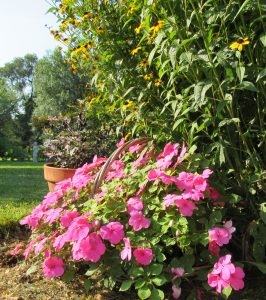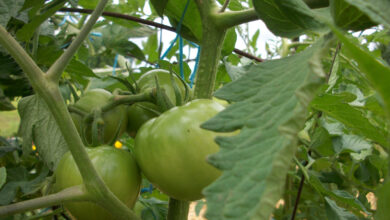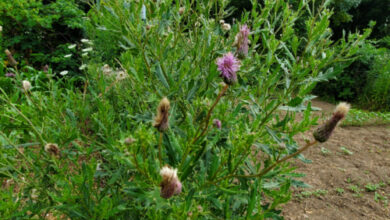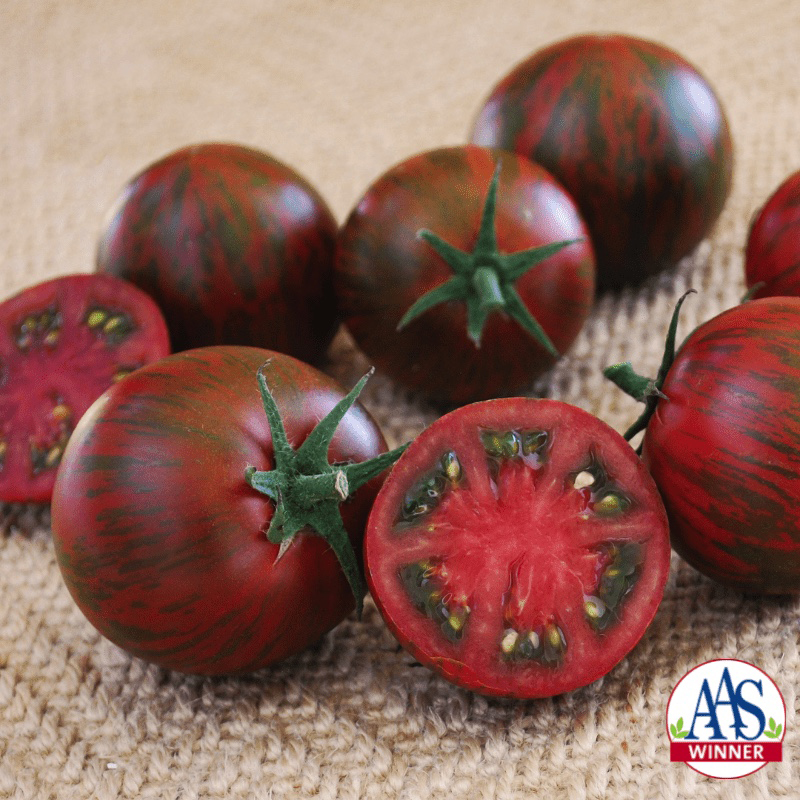Invite impatiens back into your garden

If you are still reluctant to grow impatiens in your garden, there’s more good news to reassure you that you can successfully grow this plant again in your landscape. In addition to new downy mildew resistant varieties, researchers at Michigan State University have developed a successful strategy for greenhouse growers that will keep your plants protected throughout the growing season after you get them home from the garden center.
Impatiens have been a popular annual choice for gardeners for years to brighten shady areas with cheerful blooms all summer, but a reemergence of downy mildew several years ago turned homeowners away from the once easy to grow, and relatively problem-free, plant.
The downy mildew pathogen that affects bedding and double impatiens is Plasmopara obducens. New Guinea impatiens as well as other flowering bedding plants and vegetables are not susceptible. The disease causes leaves to appear to be a bit off-color and white mildew coats their undersides. The spores that make up the white mildew travel via air currents and do not last long especially in hot and dry conditions. If foliage is wet, however, the pathogen infects and colonizes the plants. Eventually, leaves turn yellow and fall off the plant leaving just the bare stems behind.
Once plants are infected, the bed where they were grown can also become infected and make growing healthy impatiens in the same spot again very difficult. Healthy plants, in contaminated soil, develop the disease in a few weeks.
Michigan State University researchers say there is a second type of downy mildew spore called an oospore which may form in the stems and leaves of diseased impatiens. If plants are not promptly removed, the oospores can contaminate the soil and also make it more difficult to grow impatiens in subsequent growing seasons.
In order for fungicides to be effective, they must be applied before the plants are infected. Fungicides cannot cure plants already infected with a fungal disease. In their studies, Michigan State University researchers found that young plants treated with fungicide while still in the greenhouse received long-lasting protection from downy mildew, even when planted in a contaminated landscape bed.
“Although it seemed hard to believe that fungicides applied to impatiens while growing in the greenhouse could provide many weeks of protection in the landscape, these research results have been verified for several years,” MSU’s Mary Hausbeck writes.
This is good news for home gardeners because follow-up fungicides after planting in the garden are not needed. Additionally, there are fewer downy mildew fungicides registered for application in the landscape as compared to those for use in the greenhouse. Researchers call the greenhouse fungicide program, “a big step forward.”
The other good news for impatiens lovers is recent introductions of the Imara XDR (Syngenta Flowers) and Beacon (PanAmerican Seed) series impatiens which are marketed as resistant to downy mildew. A study done last year confirmed that the Imara XDR impatiens were significantly less susceptible to the disease compared to other popular impatiens series.
If you have missed the color and beauty impatiens bring to your garden, this coming growing season may be the time to welcome them back.






